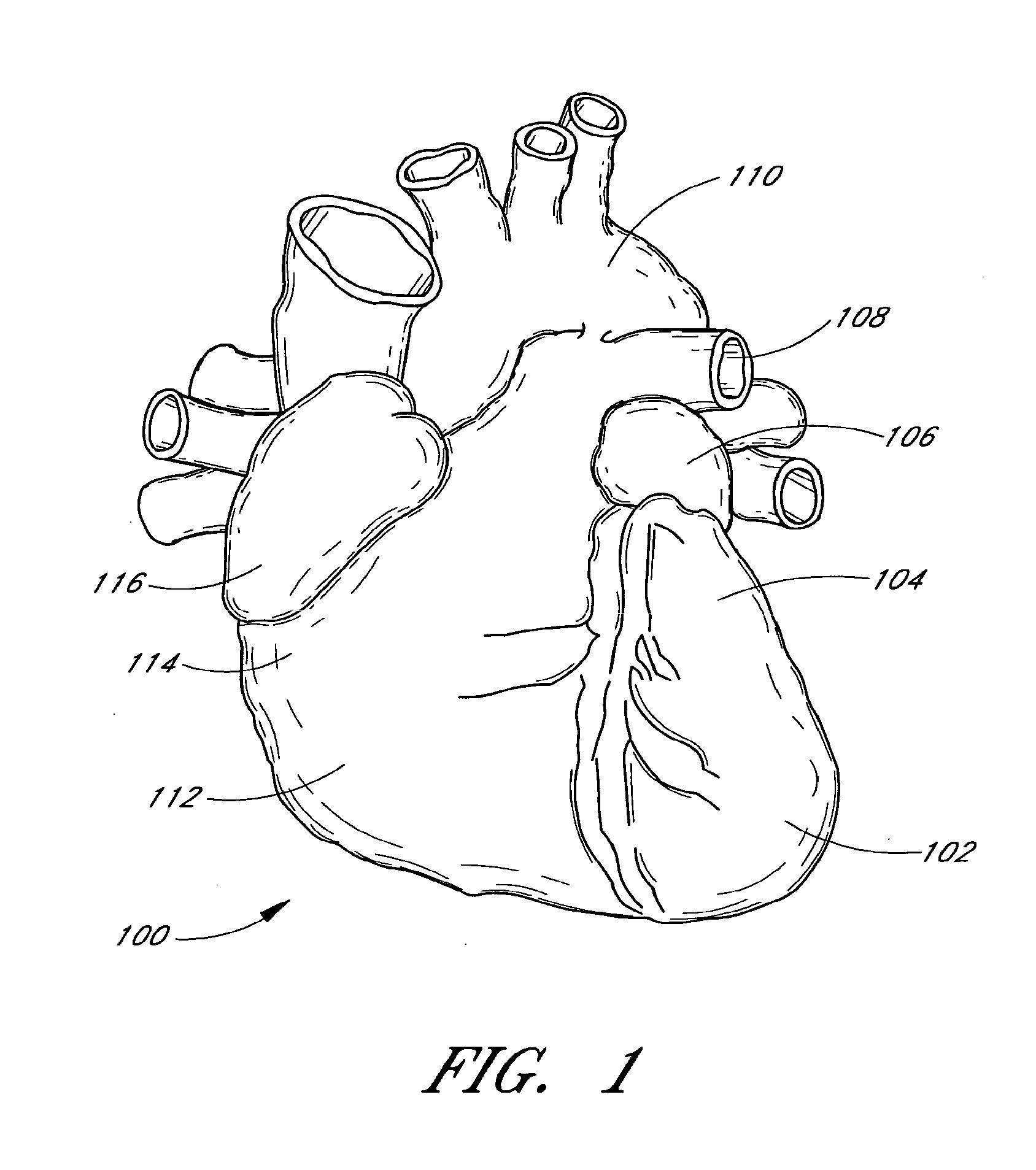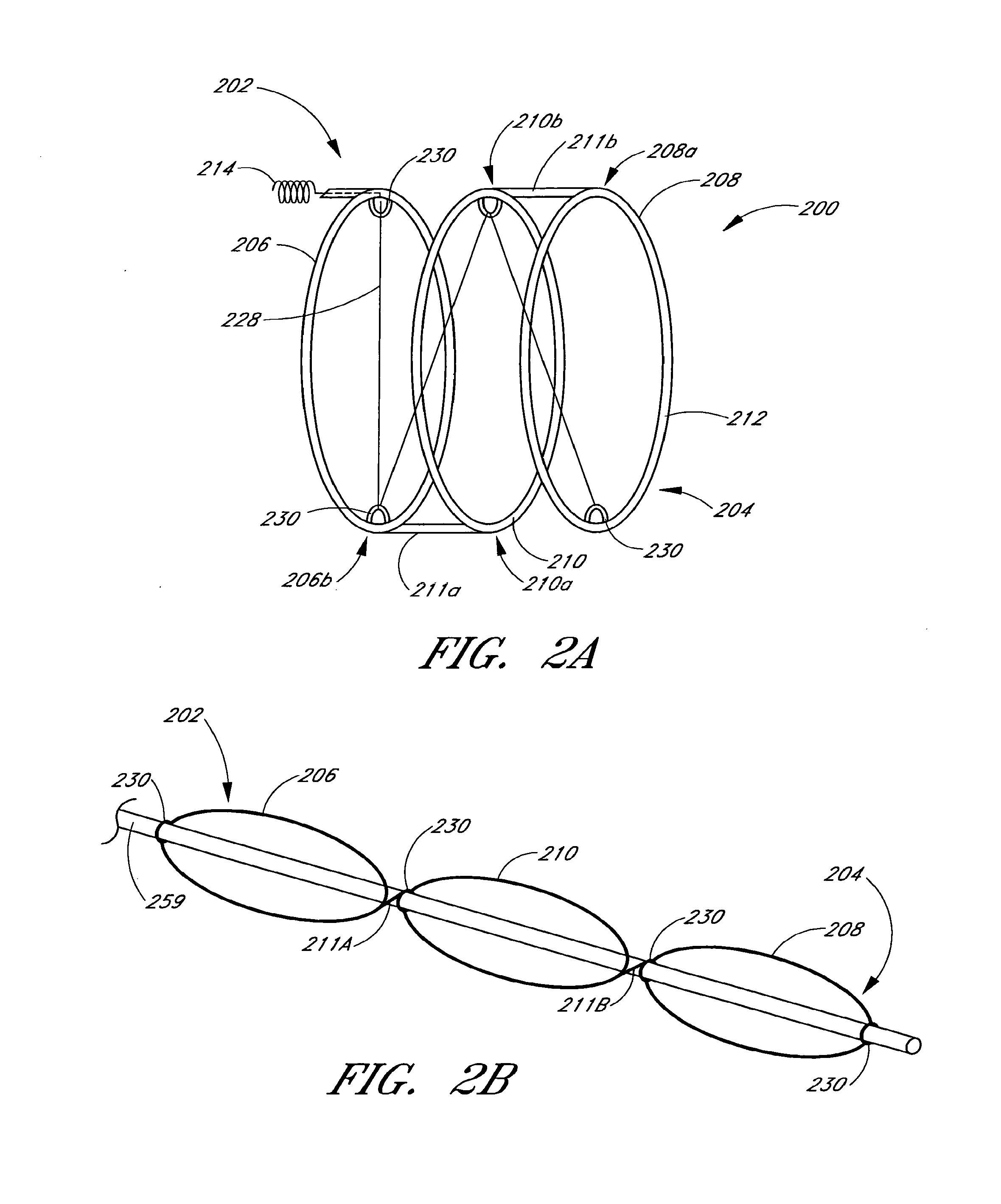Patent foramen ovale closure system
a technology of patent foramen and closure system, which is applied in the field of body lumens or cavities, can solve the problems of compromising the normal flow of blood and and reducing the efficiency of the patient's heart, so as to achieve the effect of improving the delivery and positioning system and reducing the risk of recurrent strok
- Summary
- Abstract
- Description
- Claims
- Application Information
AI Technical Summary
Benefits of technology
Problems solved by technology
Method used
Image
Examples
##orn embodiments
[0165]Umbrella and Acorn Embodiments
[0166]Referring to FIGS. 33-34, alternate structures of a closure device in accordance with the present invention are illustrated. The closure device 600 comprises an occluding member 602 comprising a frame 604 and a barrier 606. In the illustrated embodiment the frame 604 comprises a plurality of radially outwardly extending spokes 608 each having a length within the range of from about 1 cm to 6 cm. The device has a proximal end 610 and a distal end 612 corresponding to a proximal hub 614 and a distal hub 616. A central hub 618 is also preferably provided between the proximal hub 614 and distal hub 616. The frame 604 and barrier 606 form a proximal segment 620 and a distal segment 622. The designation proximal or distal is not intended to indicate any particular anatomical orientation or deployment orientation within the deployment catheter. Proximal and distal segments 620, 622 are baskets which secure the septum primum 116 and septum secundum ...
first embodiment
[0184]With reference to FIGS. 47 and 48, alternative embodiments are shown. In these embodiments, the patent foramen ovale is simply held together by positioning a device 900, 950 to hold the septum primum 116 and septum secundum 118 together. In a first embodiment, the device 900 comprises a proximal end 906 and a distal end 908, having a proximal anchor 910 and a distal anchor 912. Alternatively, a device 950 comprises a proximal end 956 and a distal end 958. The device has a screw-like configuration and comprises a coiled wire or threaded screw 960. The proximal end 906, 956 is preferably positioned in the right atrium, while the distal end 908, 958 is positioned in the left atrium. The device 900, 950 includes a detachment zone 914, 964. The device may also be provided with a sleeve, as has been discussed with previous embodiments.
[0185]Preferably, the device 900, 950 is formed of a metal such as stainless steel, Nitinol, Elgiloy, or others which can be determined through routin...
PUM
 Login to View More
Login to View More Abstract
Description
Claims
Application Information
 Login to View More
Login to View More - R&D
- Intellectual Property
- Life Sciences
- Materials
- Tech Scout
- Unparalleled Data Quality
- Higher Quality Content
- 60% Fewer Hallucinations
Browse by: Latest US Patents, China's latest patents, Technical Efficacy Thesaurus, Application Domain, Technology Topic, Popular Technical Reports.
© 2025 PatSnap. All rights reserved.Legal|Privacy policy|Modern Slavery Act Transparency Statement|Sitemap|About US| Contact US: help@patsnap.com



